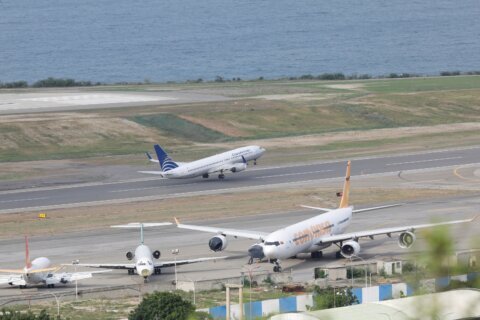By Phillip Swarts, Washington Guardian
After scrapping a failed $1 billion border security program, government investigators fear the Customs and Border Protection agency (CBP) is well on its way to bungling a new $1.5 billion effort.
“CBP does not have the information needed to fully support and implement its Arizona Border Surveillance Technology Plan,” said a report by the Government Accountability Office, Congress’ watchdog arm.
To secure the rest of Arizona’s border – and eventually all of the United States’ roughly 2,000 mile boundary with Mexico – CBP and its parent organization, the Department of Homeland Security (DHS), have started a new project: the Arizona Border Surveillance Technology Plan, which is expected to cost $1.5 billion over 10 years.
But GAO investigators are worried the program will suffer the same fate as its predecessor, which was known as SBInet.
DHS officials have not documented how they selected “the specific types, quantities and deployment locations of border surveillance technologies,” the GAO said. Nor have they come up with goals to judge if the new technology is successful.
And while the CBP did estimate the cost of the project, it used some outdated information from the old SBInet program. Plus, officials didn’t factor in costs for risk management and emergencies should something unforeseen go wrong with the program. In fact, GAO officials went so far as to call the CBP’s $1.5 billion price estimate “minimally credible.”
For already wasting a large sum of taxpayer money and setting course for potential failure in round No. 2, CBP wins this week’s Golden Hammer, a distinction awarded by theWashington Guardian for examples of wasteful spending in government.
The Homeland Security Department takes issue with the GAO’s warnings. The new system “is providing faster deployment of technology, better coverage and a more efficient balance between cost and capability,” the DHS’s Jim Crumpacker said.
When the Secure Border Initiative net (SBInet) started in 2005, the idea was to have a collection of sensor towers monitoring the border. But it didn’t work out how officials had hoped.
“Since its inception, SBInet had continued and repeated technical problems, cost overruns, and schedule delays, which raised serious questions about SBInet’s ability to meet Border Patrol’s needs for surveillance technology along the border,” the GAO said.
So in 2010, DHS decided to scrap the project. At a cost of $1 billion dollars, SBInet bolstered security along just 53 miles of the 387 mile Arizona-Mexico border, albeit the areas officials considered to be at highest risk for illegal entry.
Much of CBP’s efforts have been focused on the state of Arizona.
“In recent years, nearly half of all annual apprehensions of illegal aliens along the entire southwest border with Mexico have occurred along the Arizona border, but that number has been steadily decreasing,” the GAO said. Crumpacker said Homeland Security does document its decision process on selecting technologies for the new effort, but he conceded sometimes aspects of that process are harder to record.
“The Department relies on field agents’ expert judgment to select the types and quantities of technologies best suited for their respective geographic areas of responsibilities,” he said. “This judgment is based on the years of experience the Border Patrol has with operating many of the candidate technologies, as well as their intimate familiarity with the threats, tactics and terrain of the target geographical area.”
But Crumpacker added that the agency is working to keep cost estimates up-to-date, as well as developing hard criteria to judge the program’s success or failure.
The GAO is investigating the matter further, and plans to issue a more detailed report on the new border security program’s progress later this year.







